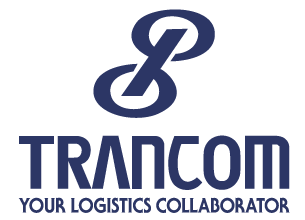Case Studies / Trancom

Matching Empty Trucks to Shipments
Finding Efficiencies in Logistics
Trancom, Inc. is a logistics service company based in Nagoya, Japan, that provides a “one stop” solution for manufacturers who want to outsource their logistics operations, with services including logistics planning, operations and information systems development.
One big issue faced by the transportation industry is that typically the shipping company will unload the cargo at the destination and the truck will return empty. This is clearly not efficient, so Trancom attempts to streamline operations through its “matching business”. Essentially, Trancom attempts to match up “trucks seeking cargo” with “shippers seeking trucks”, to ensure that trucking capacity is fully utilised, reducing costs for all parties involved. Trancom works with 13,000 partner transportation companies, matching 1.2 million shipments with vehicles each year.
As Trancom manager Yuko Kato explains, there are four steps to the matching process: obtaining empty truck information from the shipping company, obtaining the shipper’s cargo information, matching empty truck capacity to cargo and communicating the resulting route to the driver for pickup.
Adding MotionBoard to Trancom's toolkit helped it to improve matching and streamline operations by forecasting the future more accurately than before.
This directly led to increased sales, helped eliminate staff shortages and improved morale and customer satisfaction.
The GFC Creates Problems, and Opportunities
Back in the early 2000s, Trancom had implemented a proprietary dispatch solution for its matching business. While this worked well for a number of years, Trancom faced problems in aftermath of the 2008 Global Financial Crisis. The downturn had resulted in a dramatic reduction in the number of cargo shipments and consequently trucks on the roads. When the economy subsequently began to pick up, shipments increased but without a corresponding increase in the number of trucks.
Suddenly, there were more shipments than trucks. It became more important than ever to accurately understand where the spare capacity was.
When Trancom took a closer look at the data, an interesting fact emerged: despite the decrease in capacity, shipments and trucks were still only being matched at a rate of 40%, and it became clear that available capacity peaked in the morning while available shipments tended to peak in the afternoon. By changing the timing that Trancom's adjusters contacted clients, it might be possible to close the gap between supply and demand.
It also became clear when assessing the load on employees that the work of Trancom's adjusters was concentrated in the mornings.
Adding People, and BI
To attempt to resolve this problem, Trancom decided to hire part time workers to help with the increased workload each morning. But as any business owner will know, just increasing the number of workers will not necessarily lead to results. For that, Trancom turned to MotionBoard.
The resulting MotionBoard dashboard solution that Trancom developed can be accessed by all employees. These MotionBoard dashboards visualise every employee’s KPIs and goals, as well as providing detailed analytical information about the characteristics and history of each customer, allowing employees to make better decisions when matching shippers to capacity. As manager Kato explains, “with this system, even new employees can do the same job as skilled staff. Customer satisfaction has improved by better matching our resources to customer requirements.”
As well as improving productivity, visualising goals has improved motivation. Every staff member’s performance is available through the dashboard, allowing individuals to understand their own strengths and weaknesses and compare their performance against their peers. This makes it easier for individuals to set goals to improve their own skills, and the ability to evaluate staff fairly, as a basis for promotions and salary increases, has improved the motivation of the employees and the performance of the organisation as a whole.
Before
Trancom identified a clear gap in its ability to match up cargo with truck capacity.
Establishing that it needed to increase its part time workforce, Trancom needed a way to ensure the new employees were kept motivated to work towards the common goal.
After
The client now has a more accurate approach with future forecasting based on historical data.
Visibility of employee performance has allowed the achievement of the plan to be quantified and visualised on a daily basis, so that everyone can work towards the same clear goals.
